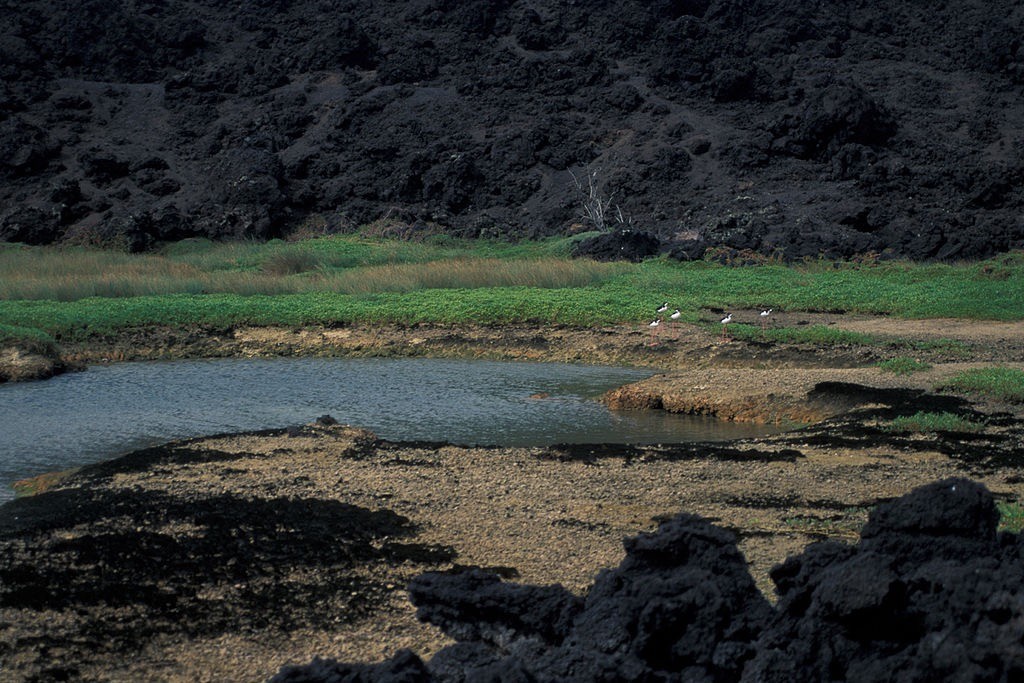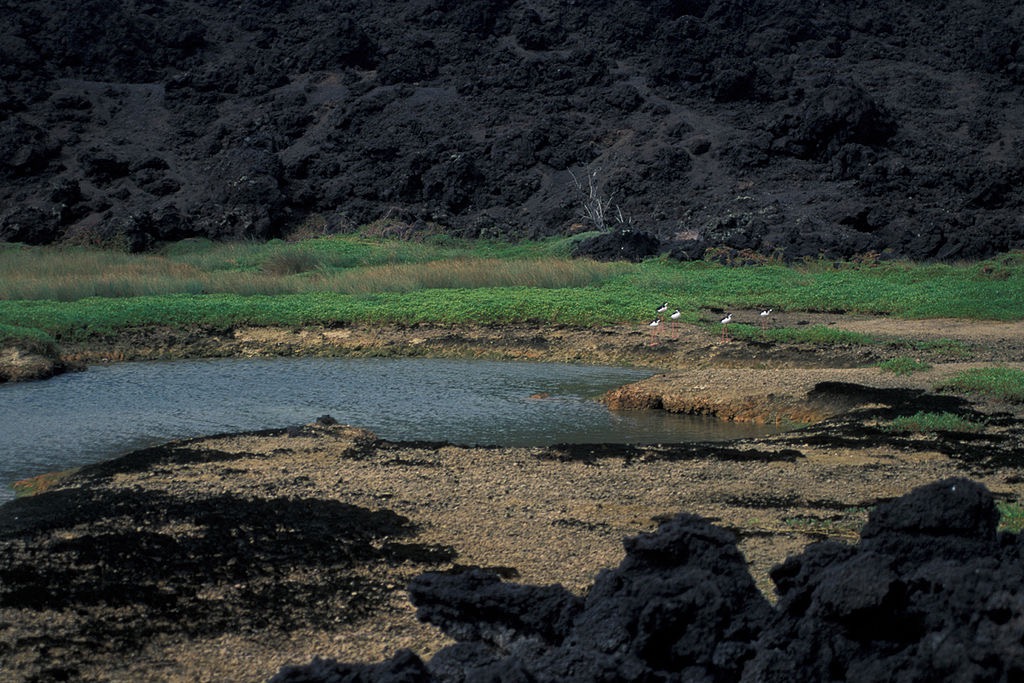
Who knew that the threats posed by unexploded bombs would be such a blessing to threatened and endangered Hawaiian wildlife?
In June, the state Board of Land and Natural Resources is expected to decide whether or not to keep most of the `Ahihi-Kina`u Natural Area Reserve closed two more years to accommodate the U.S. Army Corps of Engineers’ efforts to clean up ordnance left in the reserve since it was a training target back during World War II. The board will most likely agree with the Natural Area Reserves Systems Commission’s vote last month to maintain the closure, which means that by the time the Land Board revisits the matter in 2018, the reserve will have been closed — and the resources there allowed to rest and recover — for an entire decade. According to reports by Department of Land and Natural Resources staff, several protected wildlife species are making the most of the respite.
The Land Board first closed the reserve, located on the south coast of Maui, in August 2008 to protect its resources, including anchialine ponds and ancient Hawaiian archaeological sites. Some 250,000 visitors a year once flocked to the reserve, many of them lured there by guidebooks promising some of the best snorkeling on the island. They used the ponds as toilets and trampled corals. Public safety was also a concern at the time, with so many visitors venturing out into such a remote, rugged, and arid area.
It was pure coincidence that around the time of the closure, the discovery of unexploded ordnance by NARS staff had prompted the U.S. Army Corps to inspect the reserve, formerly part of the Kanahena bombing range. The Corps mostly found ordnance scraps, but did locate a few unexploded munitions that may eventually have to be blown up in place.
Sometime in the next four years, the Corps is planning to do a partial cleanup of the reserve to create buffers around selected sites such as the anchialine ponds, cultural features, and trails that may eventually be used for managed access. Exactly what sites will be cleaned and how much access will ultimately be allowed still needs to be determined, according to NARS staff.
In the time since the Land Board first closed the reserve, “it became clear that some of the resources in the restricted areas were showing improvement,” an April staff report to the NARS Commission states. “Endangered birds were utilizing areas of the reserve that they had never been recorded in, most likely due to impacts of the high human use before the restrictions. Breeding success showed improvement and new species of migratory birds appeared in the reserve for the first time. Green sea turtles” — a species federally listed as threatened — “were also recorded basking on beaches in one of the restricted areas on a consistent basis. Previous to the 2008 restrictions, turtles had never been recorded in these popular recreational areas. Hawaiian monk seals have also hauled ashore to rest in the same areas,” it states.
Peter Landon, manager of the `Ahihi-Kina`u NAR, says he hasn’t really documented the changes in wildlife use of the area, but has spotted monk seals — an endangered species — basking in the reserve during marine debris cleanups.
Wetland birds such as the endangered Hawaiian stilt, or `ae`o, that live in and around the anchialine pools have also ramped up their use of the reserve since the closure, says Fern Duvall, a wildlife biologist with the DLNR’s Division of Forestry and Wildlife. Duvall says snow geese, a migrant species, were spotted shortly after the closure.
With regard to the stilts, “the noticeable thing is not an increase in bird numbers, but rather bird behavior. If you have people going straight up to pools, [the birds] would take off,” he says, adding that at `Ahihi-Kina`u, where the barren lava landscape offers little to no shade, “eggs can overheat if the birds are scared away.” With the reduction of humans in the reserve, two pairs of stilts that nest at one of the larger pools have successfully reared three and four chicks per pair per season, “meaning they have great survivability,” he says. Having done annual waterbird counts there since 1996, Duvall says he believes the birds have never been as reproductive as they are now. If and when the Corps detonates the unexploded ordnance, that could scare the birds away if it occurs during the breeding season, Duvall says.
With the Corps possibly needing four years to complete its work in the reserve, the Land Board may need to vote again in 2018 to extend the closure for another two years. A small section at the boundary of the reserve is open and actively used by the public, but the rest has been recently fenced off. Landon says that since the fence has been put up, the number of people trying to sneak into the closed area to reach the snorkeling coves has tapered off. Still, he says, he catches people attempting to do so about once a month.
— Teresa Dawson
For Further Reading
- “Board Approves Management Plan For `Ahihi-Kina`u Reserve (Board Talk),” November 2012;
- “Army Corps Completes Ordnance Survey of `Ahihi-Kina`u Natural Area Reserve,” EH-XTRA, December 8, 2011;
- “Proclamation, Rights of Entry Unfetter Army Ordnance Surveys, Detonation,” October 2011;
- “Ordnance Survey at `Ahihi-Kina`u Reserve Receives Mixed Response from Public;” October 2011;
- “Ordnance Survey Raises Concern Among `Ahihi-Kina`u Managers;” August 2011
- “Health, Safety Concerns Prompt Commission To Recommend Closure of `Ahihi-Kina`u;” December 2005;
- “Throngs Threaten Rare Resources At ‘Ahihi-Kina‘u Natural Area Reserve,” February 2005;
- “Natural Areas Commission Rejects Plan For Kayak Concession at ‘Ahihi-Kina’u,” May 2004;
- “Enforcement at Ahihi-Kina’u Hinges On Community Input, New Permit Rules,” February 2004;
- “‘Ahihi-Kina’u Crisis Raises Debate Over Commercial Use in Reserves;” July 2003.
Volume 26, Number 11 May 2016


Leave a Reply